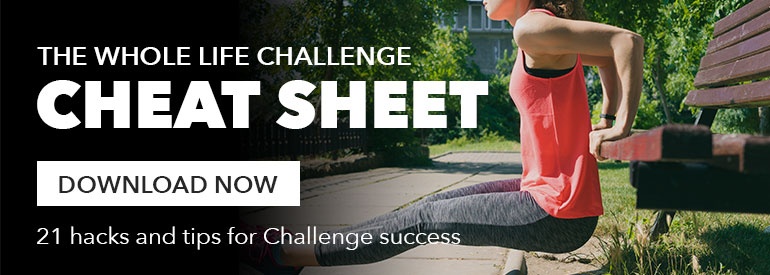 Reading Time: 3 minutes
Reading Time: 3 minutesPractice Mindful Breathing Each Day This Week
Simple Instructions:
- Sit quietly or lie down, close your eyes and mouth, and put one hand on your chest and the other on your stomach.
- Breath only through your nose while focusing your attention on keeping your chest still while your abdomen rises and falls with each breath, breathing the minimal amount necessary.
- Feel the rising and falling of your abdomen, noticing any thoughts, physical sensations, or emotions that arise in your mind.
- Let your thoughts, sensations, and emotions pass by, using your breathing as an anchor to focus on.
- Do this for a minimum of ten minutes each day. You can break it into multiple pieces, doing a few minutes in the morning, a few in the afternoon, etc., but you should total at least ten minutes overall.
Watch this video for an explanation of this Well-Being Practice from Whole Life Challenge co-founders Andy Petranek and Michael Stanwyck.
Why Is This Practice Important?
Can you recall a time when something got you really scared or upset? One of the things you may recall from that moment is that the quality of your breath changed. To recover your calm, you may have told yourself (or had someone tell you), “Just breathe.” Breathing down into your belly, moving past your chest, may have restored both your physical and your mental state.
The quality of our breathing can have both positive and negative impacts on our life in powerful ways. As a result of the stresses in our modern world, many of us tend to have shallow, chest-centered breaths, a pattern typically associated in research and in our own personal experience with fear, anger, and other negative emotions.
Believe it or not, that current runs both ways — emotions can cause breathing patterns and breathing patterns can cause particular emotions to manifest. Focusing your attention on establishing calm, belly-centered breathing gives you the ability to instill a pattern that can literally move fear and sadness out, as well as elicit joy.
But you don’t have to wait until you’re upset to practice this breathing. Spending a few minutes bringing your breath down to your belly can increase your normal level of calm and awareness any time you like. And, yes, it can also do wonders when you are upset to change your breathing before you speak or respond to the others involved.
Taking a greater degree of control and establishing awareness in how you breathe is a practical, potent tool in creating deep physical and emotional well-being.
For More on This Practice
For a deeper dive into the practice of breathing and the inspiration for this week’s Well-Being Practice, listen to Andy’s podcast with Patrick McKeown. Patrick has taught breathing techniques to thousands of people and many have seen remarkable transformations — eliminating asthma, snoring, and sleep apnea, improving the health of gums and teeth, changing jaw structure, reducing stress, and improving performance.
If you enjoy this podcast, subscribe on iTunes to be notified when we release new episodes.








